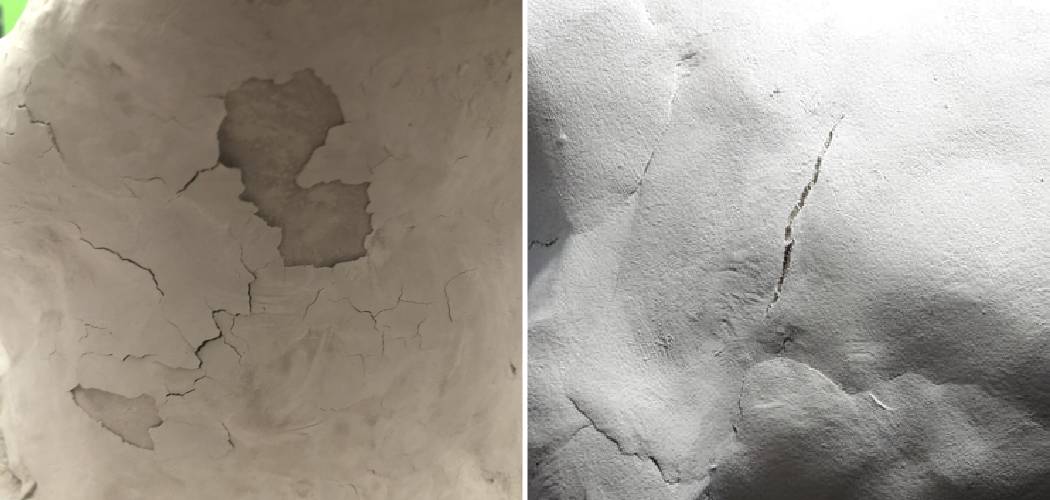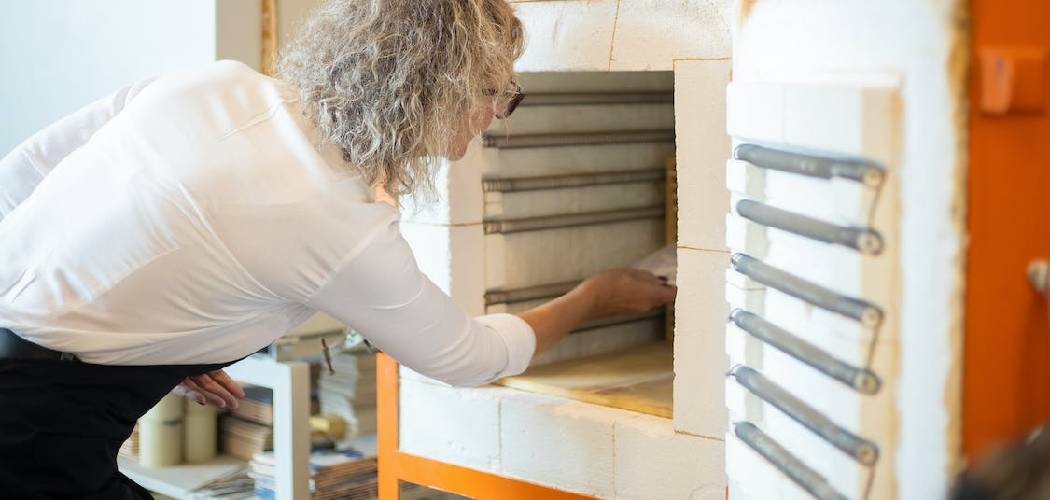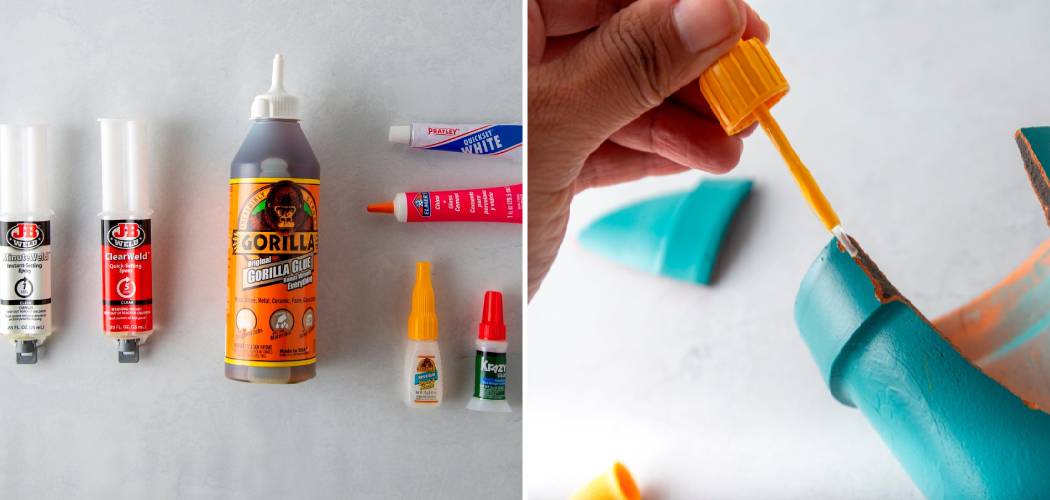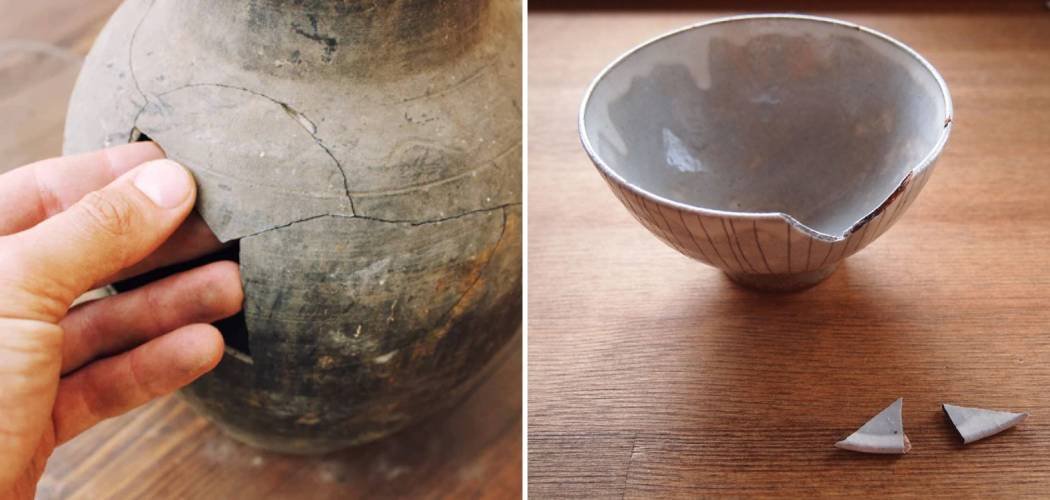Are you curious about how to fix cracks in clay before firing it? If so, you’ve come to the right place. Cracks are an unfortunate but common occurrence when working with clay, and can occur due to a variety of reasons – from improper preparation of the clay body prior to its use, or from drying too quickly in a kiln set on a high heat setting.
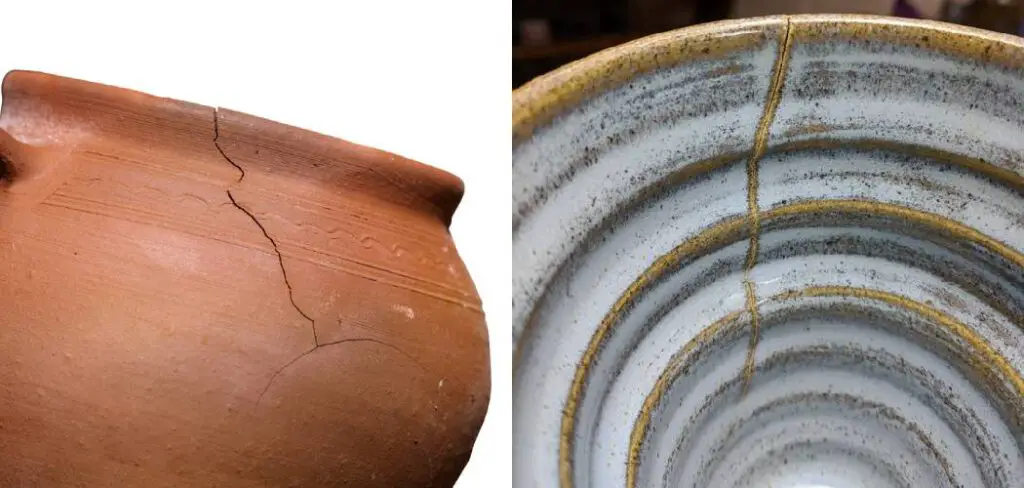
Whatever the reason for your cracked pottery piece may be, there are several steps that you can take to reduce the risk of cracking during firing – or even repair existing cracks prior to placing your newly-formed creation into the kiln. Read on for our expert advice on how best to go about fixing any cracked pieces before firing them up!
Table of Contents
Can I Fire Cracked Clay?
No, it is not recommended to fire cracked clay. Cracks in the clay will usually expand as the piece is fired and cause further structural damage. This can weaken or even ruin your pottery piece in the kiln.
Depending on the severity of the crack, you may be able to repair it using one of several methods before firing. However, it is always best to repair the cracks before firing to ensure that your clay piece remains strong and intact.
To repair a crack in clay, you can use one of several methods. One popular method is layering slip-over cracked areas. The slip will bond with both sides of the crack and seal it off from any further damage. You can also layer coils of clay on top of each other along the length of a larger crack.
This method works well for surface cracks and fractures where there has been no structural damage to the piece. Finally, you can fill in large gaps or cavities with slurry, which is a thick liquid mixture made up of 50 percent water and 50 percent clay powder. This should be left to dry before firing.
If you have an especially large crack or fracture, it is best to discard the piece as it may not be safe to fire in the kiln. While these methods can help repair clay pieces, they do not always guarantee success and should only be used for minor repairs.
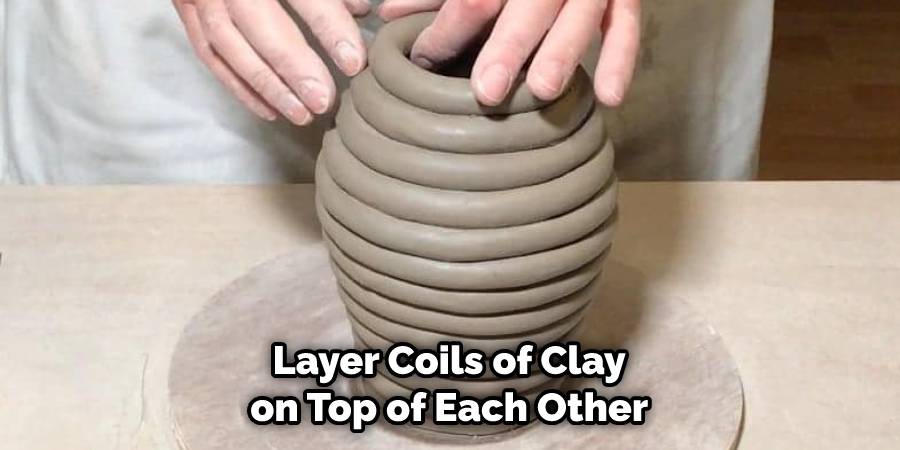
If you are unsure about the extent of a crack or fracture in your clay piece, it is best to consult with a professional potter before continuing on with any attempts at fixing the issue. This way, you can ensure that your pottery piece will survive its time in the kiln without further damage.
10 Methods How to Fix Cracks in Clay before Firing
1. Pre-Soak the Clay
Pre-soaking the clay is a simple but effective way to prevent cracks during firing. By pre-soaking the clay, you are essentially increasing its flexibility, which will help to prevent it from cracking when exposed to high temperatures.
To pre-soak, simply submerge the clay in water and allow it to sit for several hours. This will give it a chance to absorb moisture and become more flexible. Try to avoid using cold water, as this could cause the clay to crack during firing.
2. Avoid Drastic Temperature Changes
When working with clay, it is important to avoid drastic changes in temperature. This means that you should not put your clay piece directly into a kiln that is already at a high temperature. Instead, you should slowly heat up the kiln so that the clay has time to adjust to the change in temperature.
If you put the clay piece into a kiln that is already hot, then it could cause the clay to expand too quickly and create more cracks. Additionally, make sure not to place your finished piece into cold water after taking it out of the kiln. This can also cause cracks in your work due to rapid temperature changes.
3. Use a Lower Firing Temperature
If you are concerned about your clay piece cracking during firing, you can try using a lower firing temperature. This will help to prevent the clay from expanding too much and cracking as a result.
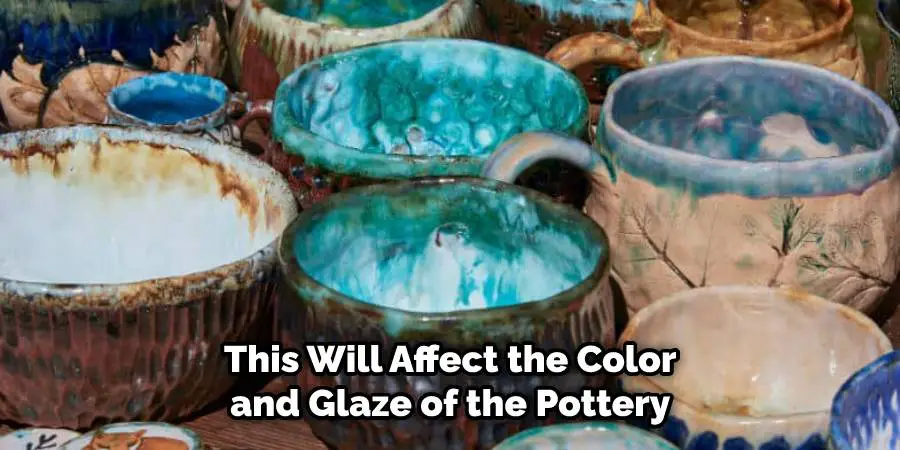
However, it is important to note that this will also affect the color and glaze of the finished piece. Therefore, you may need to experiment with different firing temperatures until you find the one that best suits your needs. Additionally, be sure to check with your local ceramic supplier for specific temperature recommendations based on the type of clay used.
4. Use a Slower Firing Rate
Another way to prevent your clay piece from cracking during firing is to use a slower firing rate. This means that you should not increase the temperature of the kiln too quickly. Instead, you should allow the kiln to heat up slowly so that the clay has time to adjust to the change in temperature.
5. Use an Appropriate Size Kiln
When firing a clay piece, it is important to use an appropriate size kiln. If you are using a kiln that is too small for your piece, this can cause the piece to crack during firing as it will not have enough room to expand. Conversely, if you are using a kiln that is too large for your piece, this can also cause the piece to crack as it will be exposed to too much heat.
6. Use an Appropriate Type of Clay
When choosing a type of clay for your project, it is important to select one that is suitable for the desired outcome. For example, if you are looking for a clay that is strong and durable, then stoneware would be a good choice. However, if you are looking for a clay that is more flexible, then porcelain would be a better choice.
Additionally, some clays are more likely to crack than others, so it is important to research the types of clay that you plan to use before beginning your project. Once you have selected your type of clay, make sure you follow the instructions for preparing and firing accordingly. This will help you achieve the best results from your project.
7. Avoid Overworking the Clay
When working with clay, it is important to avoid overworking it as this can cause the clay to become brittle and more likely to crack during firing. If you find that your clay is becoming difficult to work with, take a break and allow it to rest for a while before continuing. It is important to remember that too much clay-working can put undue stress on the material and weaken it, making it much more prone to cracking.
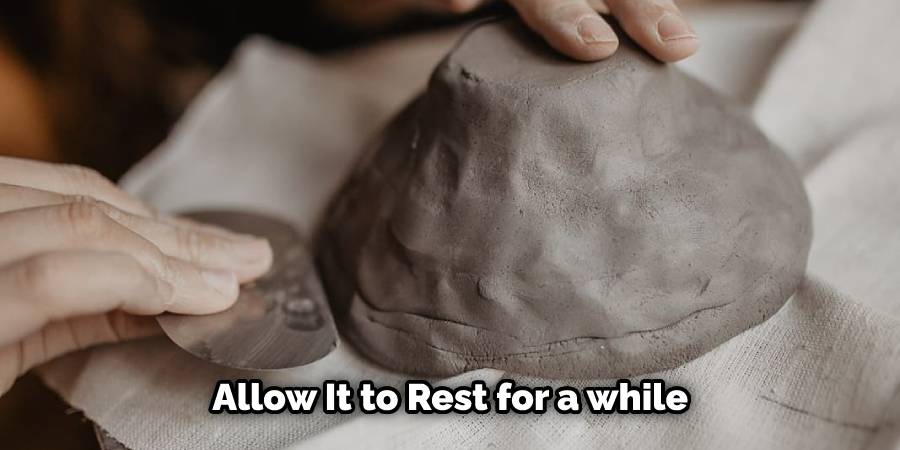
8. Add Reinforcement if Necessary
In some cases, it may be necessary to add reinforcement to your clay piece in order to prevent it from cracking during firing. Reinforcement can be added in the form of wires or rods placed inside the piece or by attaching pieces of cloth or paper onto the surface of the piece.
9. Protect Your Piece during Firing
If you are worried about your clay piece cracking during firing, there are some things that you can do to protect it. One option is to place your piece on top of a layer of sand in the kiln so that it is not directly exposed to the heat source. Another option is to wrap your piece in foil so that it does not come into direct contact with any flames or hot surfaces.
10. Glaze Your Piece
Finally, glazing your clay piece can help to prevent it from cracking during firing. The glaze will form an impermeable barrier which will help to protect the clay from cracking when exposed to high temperatures. However, it is important to note that this method should only be used on pieces that are not too thick or heavy, as the glaze may cause them to crack due to its weight.
If you follow these tips and techniques, you should be able to successfully fire your clay without any cracks or other damage! Just remember to take your time and always seek the advice of a professional potter before continuing on with any attempts at fixing the issue. With a little bit of patience and practice, you can ensure that your clay pieces turn out perfect every time.
Things to Consider When Fixing Cracks in Clay Before Firing:
1. The Type and Size of the Crack:
Depending on the size and severity of the crack, different methods can be used for repairing it. Cracks that are too large in diameter or go all the way through may not be able to be fully repaired and should instead be treated differently than smaller surface cracks.
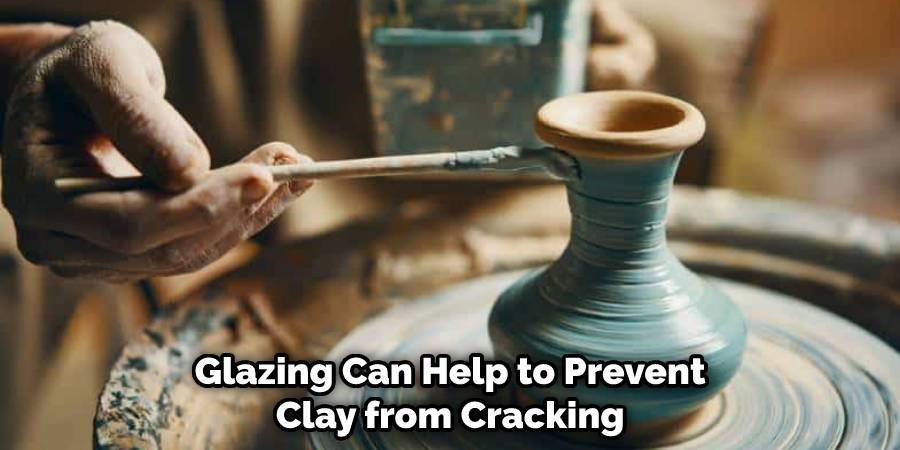
2. The Type of Clay Used:
Different types of clay will require different methods for repairing the cracks. For example, stoneware clay may respond differently to repair techniques than earthenware or porcelain-type clay.
3. The Schedule and Temperature of the Intended Firing:
Different temperatures and firing schedules will also have an effect on how well repairs hold up in the kiln. If there is an extreme difference between the first and second firing, it’s important to consider techniques that will allow for more flexibility when it comes to crack repairs.
Conclusion:
By following the steps above on how to fix cracks in clay before firing, you can fix cracks in your clay before firing and have a beautiful, smooth finished product. If your piece is still not as strong as you would like after fixing the cracks, consider adding a layer of reinforcements such as carbon fiber or copper wire. With a little extra care and attention, you can create amazing pieces of art from clay that will withstand the heat of firing and last for many years to come.
